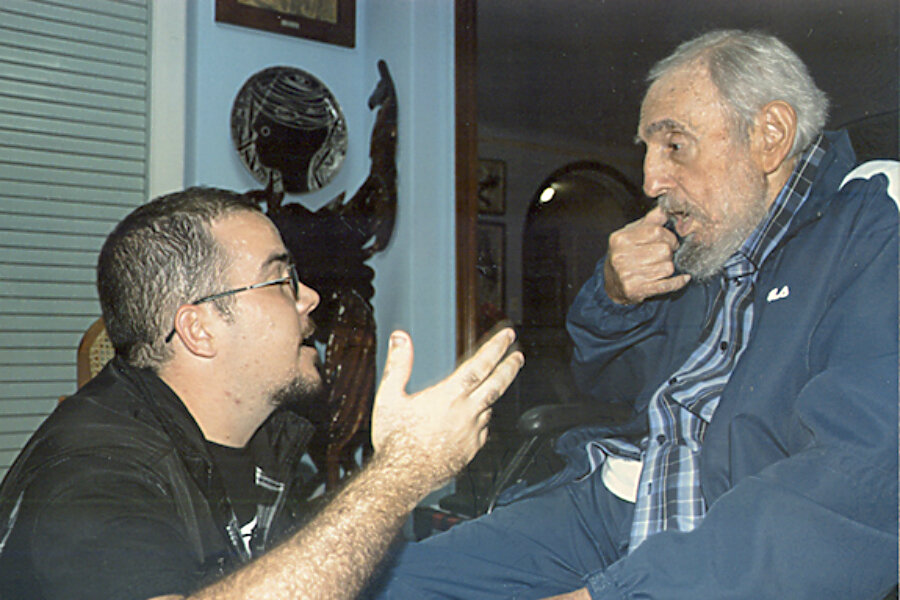Cuba: Photos of Fidel Castro published for first time in five months
Loading...
| Havana
Cuba has published the first photos of Fidel Castro in more than five months, showing the 88-year-old former leader engaged in what appears to be a lively conversation with a university student.
Nearly two dozen images were published virtually simultaneously on the websites of Cuba's main state media outlets around midnight Monday. In them, Castro is seated and discussing current events with the head of the main Cuban student union. A first-person account by student leader Randy Perdomo Garcia says the meeting took place on Jan. 23.
The photos are the first images of the revolutionary leader since a set of photos came out in August showing him talking with Venezuelan President Nicolas Maduro.
Perdomo says in a lengthy article accompanying the photos that he and Castro met for more than three hours in the former leader's house after an event celebrating the 70th anniversary of Castro starting his studies at the University of Havana.
The student leader says Castro said that he is keeping abreast of the news and performing daily exercises, and he engaged Perdomo in a wide-ranging discussion of topics including international politics, agriculture, astronomy, and even Namibia's donation of animals to Cuba's National Zoo.
Perdomo says the two men discussed the release of three Cuban intelligence agents as part of the Dec. 17 declaration by Cuba and the United States that they would move to re-establish full diplomatic relations. The photos show Castro examining a newspaper report on their release.
"I'm about to go but he continues a conversation about new ways of fighting some diseases, including diabetes, with the production of natural foods; about Cuba's relations with Africa, from its contribution to those countries' independence to the end of apartheid and the current contribution of Cuban doctors to the fight against Ebola," Perdomo wrote.
Castro did not issue a public statement for nearly a month after the announcement that Cuba and the U.S. were moving to re-establish full diplomatic relations. Castro's public appearances and statements have become increasingly infrequent since he stepped down from duties as president after a serious illness in 2006 and handed over leadership to his younger brother Raul. His unusually lengthy silence after the Dec. 17 announcement sparked intense speculation about his health.







